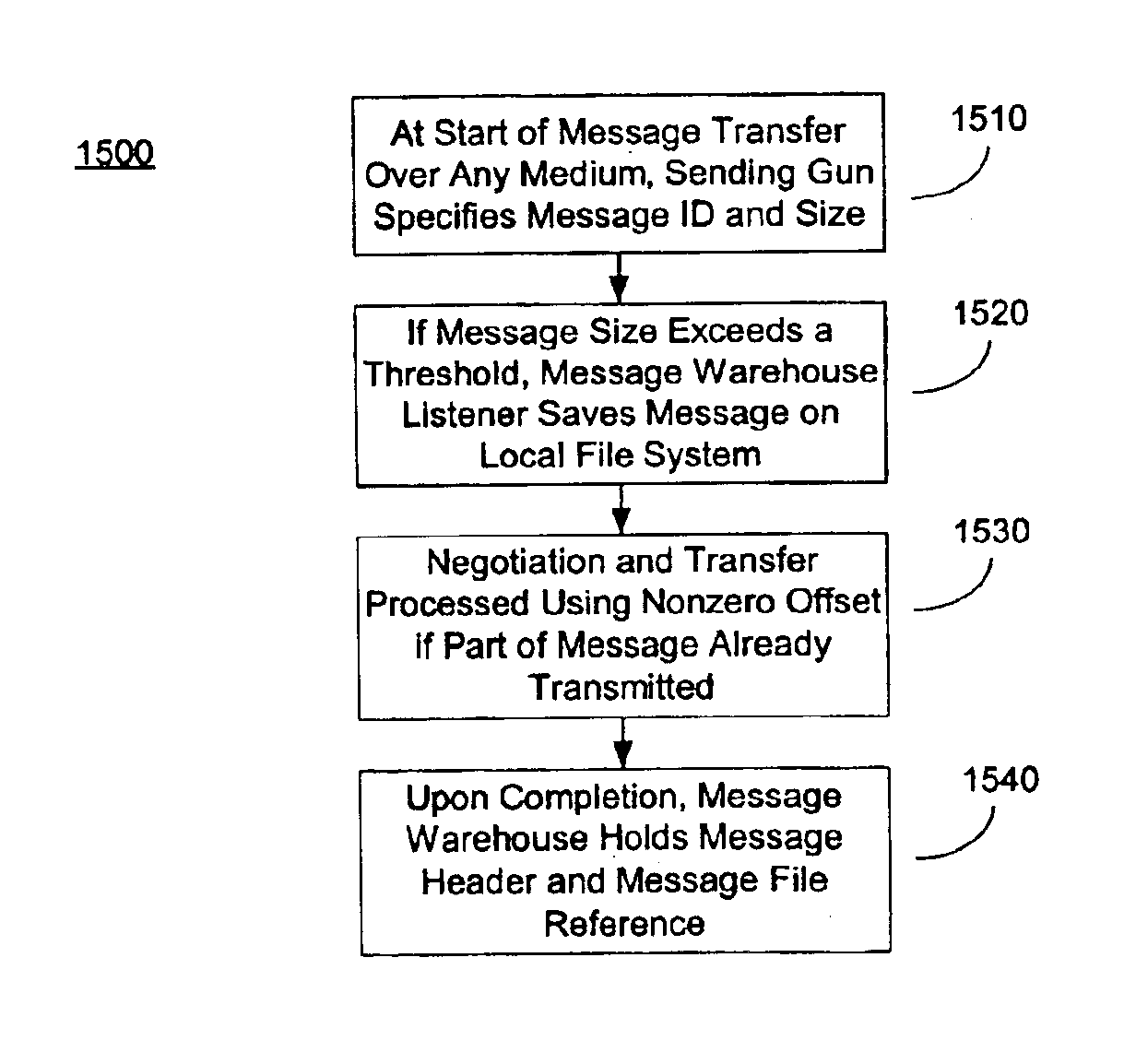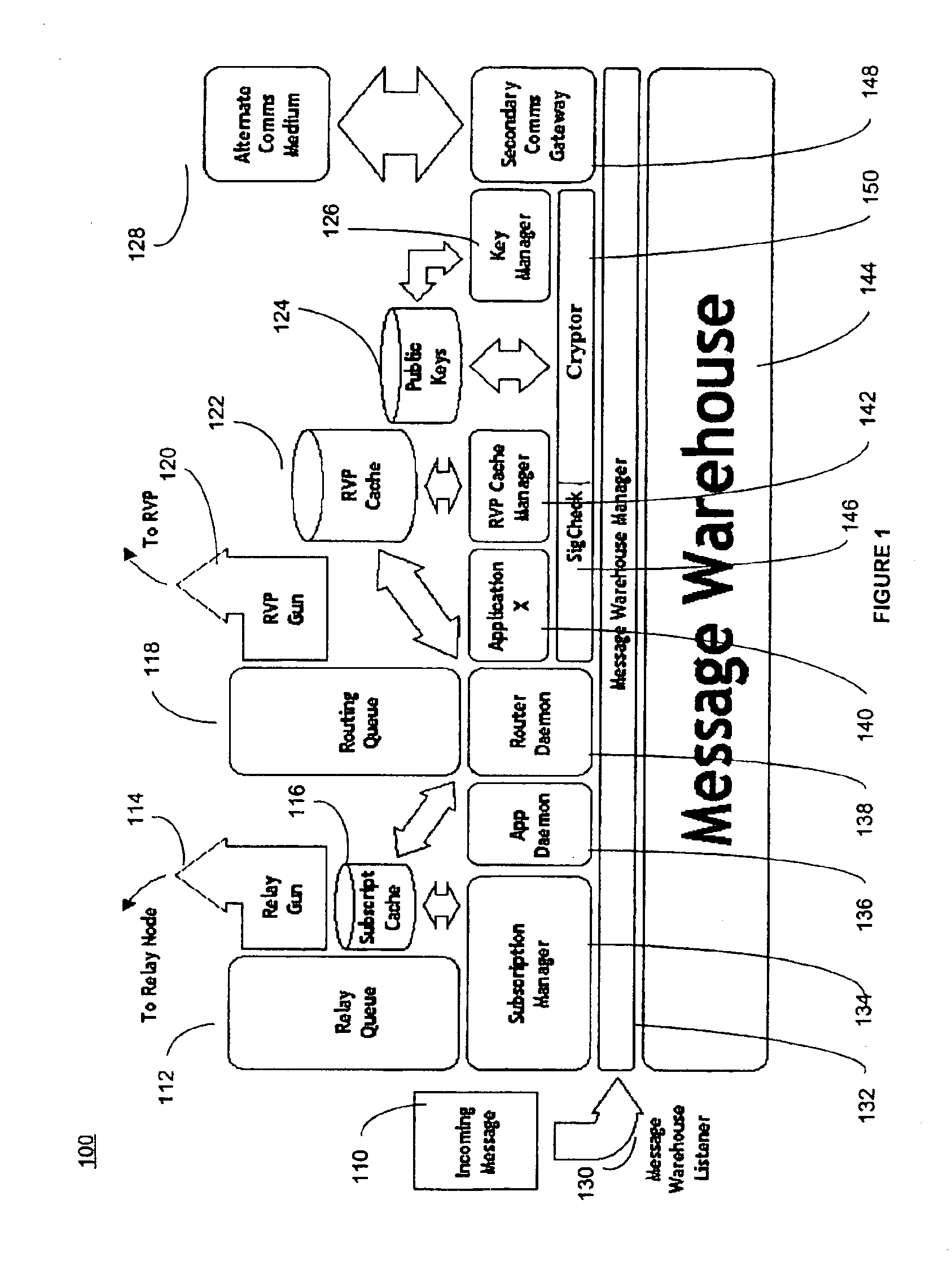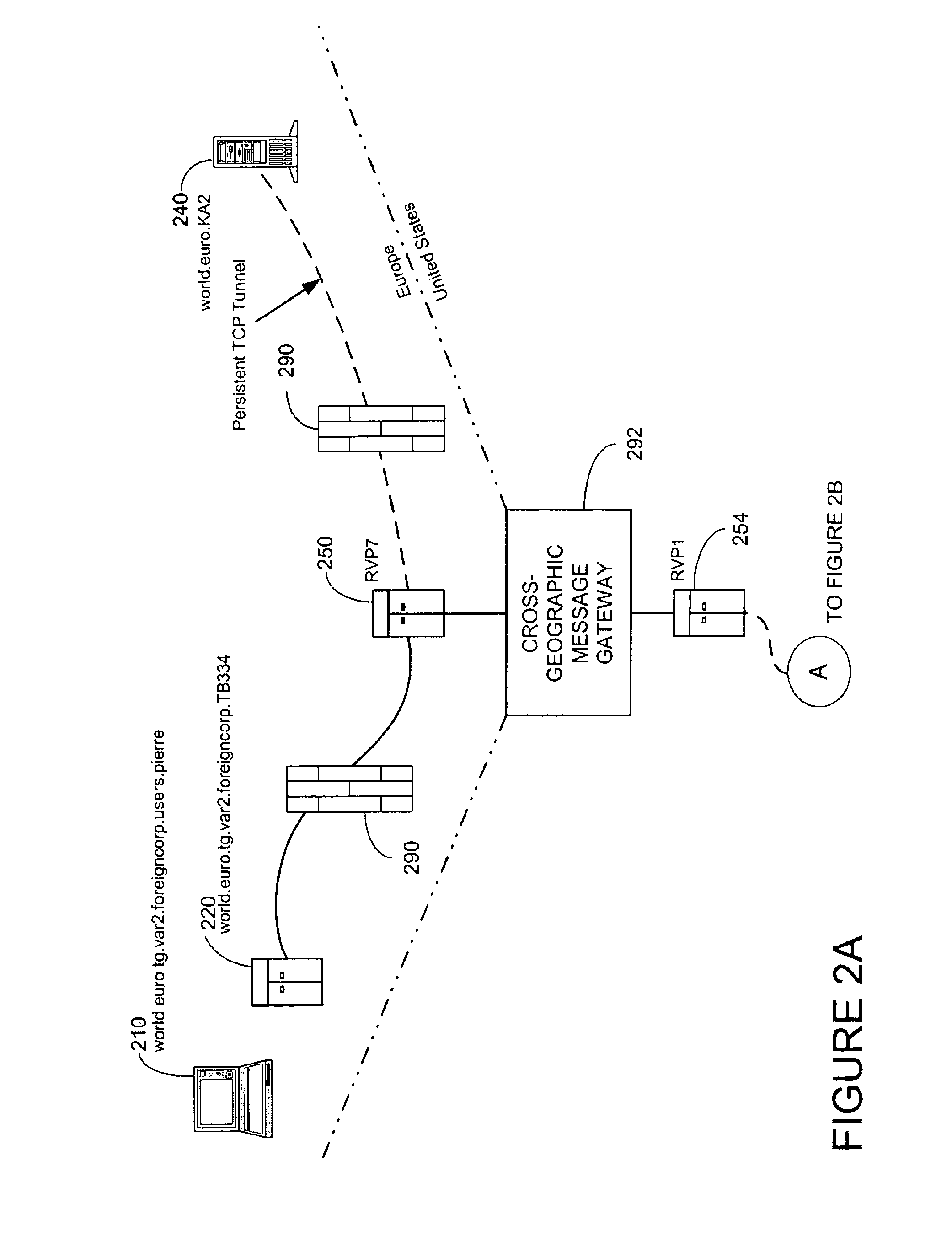System and method for secure message-oriented network communications
a message-oriented network and message technology, applied in the field of network security, can solve the problems of unauthorized memory use protection, subscription expiration, and need to be renewed on a regular basis, and authorized users can only use pre-coordinated applications, etc., to facilitate the exchange of public keys
- Summary
- Abstract
- Description
- Claims
- Application Information
AI Technical Summary
Benefits of technology
Problems solved by technology
Method used
Image
Examples
Embodiment Construction
[0035]Turning now to FIG. 1, FIG. 1 shows a functional block diagram of the Security Network Transport Layer (SNTL) 100 according to an embodiment of the present invention. The purpose of the SNTL 100 is to establish a two-way communications channel across firewalls for message traffic and forwarded connections. The SNTL 100 provides a medium over which security network nodes behind firewalls can communicate in full duplex with other nodes of the security network. Since firewalls are intended to block in-bound communications to the networks on which network scanners may be deployed, a form of firewall tunneling must be used to enable bi-directional communications. The SNTL 100 is also used to make and control access to forwarded ports that give access to protected resources through firewalls. Opening these services up to the world obviates the need to ensure only an authorized requestor of the services uses the forwarded resource. An SNTL 100 allows bi-directional transmission of me...
PUM
 Login to View More
Login to View More Abstract
Description
Claims
Application Information
 Login to View More
Login to View More - R&D
- Intellectual Property
- Life Sciences
- Materials
- Tech Scout
- Unparalleled Data Quality
- Higher Quality Content
- 60% Fewer Hallucinations
Browse by: Latest US Patents, China's latest patents, Technical Efficacy Thesaurus, Application Domain, Technology Topic, Popular Technical Reports.
© 2025 PatSnap. All rights reserved.Legal|Privacy policy|Modern Slavery Act Transparency Statement|Sitemap|About US| Contact US: help@patsnap.com



